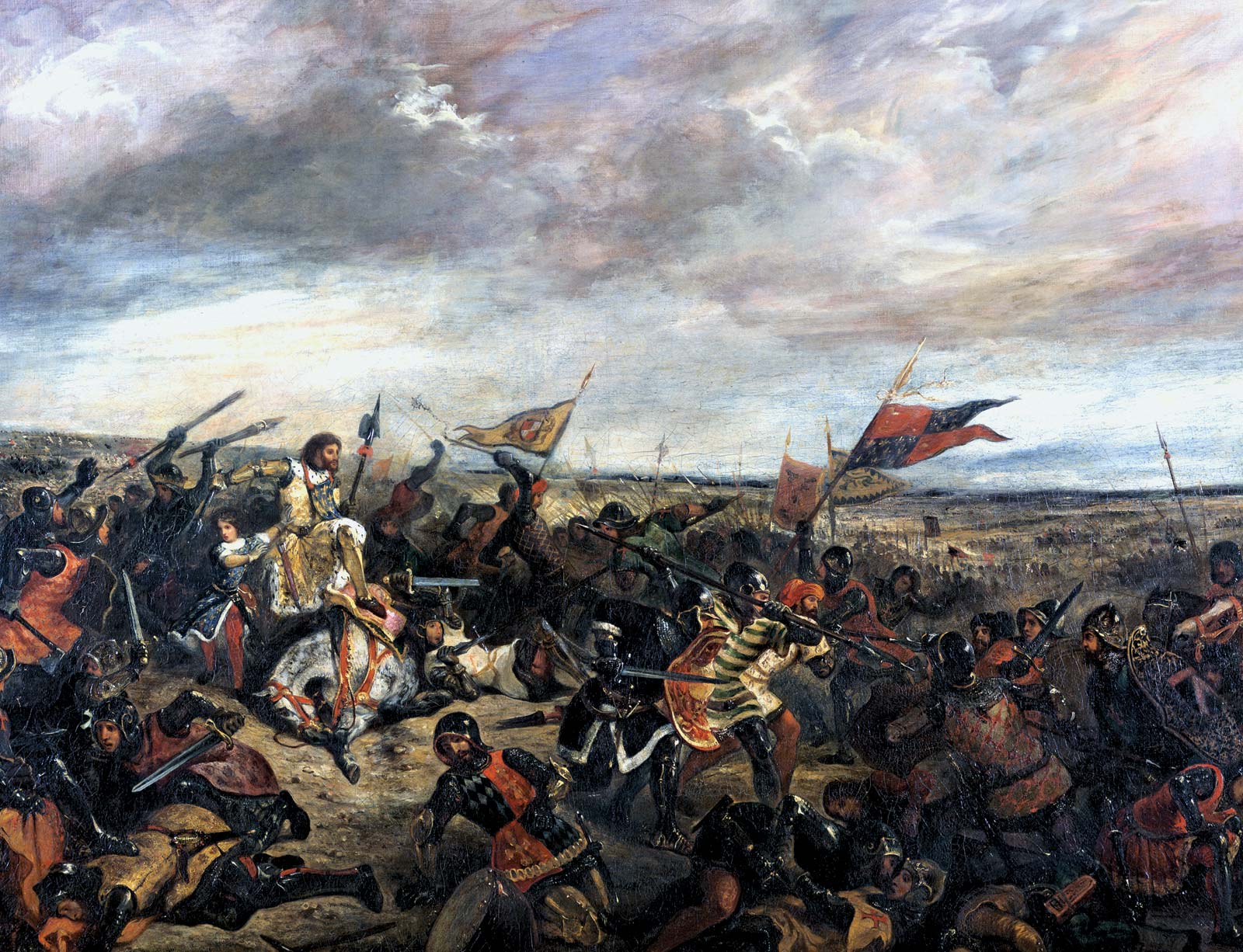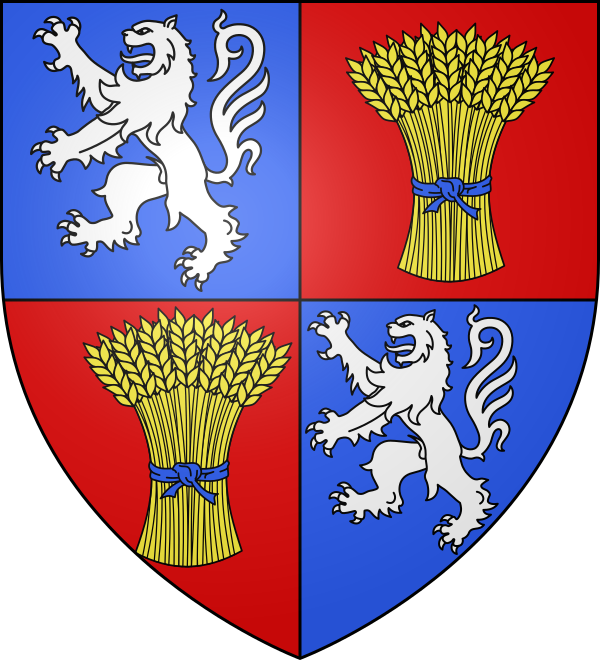
The Battle of Poitiers,
19 September 1356.
Artist: Eugène Delacroix.
(Wikimedia Commons)
unless otherwise stated.
The Battle of Poitiers was a major battle of The Hundred Years' War between England and France. The battle occurred on 19 September 1356, near Poitiers, France. Preceded by The Battle of Crécy, in 1346, and followed by The Battle of Agincourt, in 1415, it was the second of the three great English victories of the war.

English: Royal Coat-of-Arms of the Kingdom of England and France (1340-1367).
Français: Armoires royales de l'Angleterre et France (1340-1367).
Date: 20 July 2010.
Source: Own work.
Author: Sodacan.
(Wikimedia Commons)
His forces met little resistance, burning numerous Towns to the ground and living off the land, until they reached the River Loire at Tours. They were unable to take the Castle or burn the Town, due to a heavy downpour. This delay allowed John II, King of France, to attempt to catch Edward's army. The King, who had been besieging Breteuil in Normandy, arranged the bulk of his army at Chartres, to the North of the besieged Tours, dismissing approximately 15,000–20,000 of his lower-quality infantry, to increase the speed of his forces.

English: Coat-of-Arms of the French Duchy of Gascony.
Allied to Edward, The Black Prince, at The Battle of Poitiers.
Français: Blason de la province de Gascogne.
Date: 27 June 2008.
Source: Own work.
Author: Peter17.
(Wikimedia Commons)
The conference attended by the King of France, Sir John Chandos, and many other prominent people of the period, The King (of France), to prolong the matter and to put off the battle, assembled and brought together all the Barons of both sides.
Of speech there, he (the King) made no stint. There came the Count of Tancarville, and, as the list says, the Archbishop of Sens (Guillaume de Melun) was there, he of Talaru, of great discretion, Charny, Bouciquaut, and Clermont; all these went there for the council of the King of France.
On the other side there came gladly the Earl of Warwick, the hoary-headed (white or grey headed) Earl of Suffolk was there, and Bartholomew de Burghersh, most privy to the Prince, and Audeley and Chandos, who at that time were of great repute. There they held their parliament, and each one spoke his mind. But their counsel I cannot relate, yet I know well, in very truth, as I hear in my record, that they could not be agreed, wherefore each one of them began to depart.
Then said the prophetic words of Geoffroi de Charny:
'Lords,' quoth he, 'since so it is that this treaty pleases you no more, I make offer that we fight you, a hundred against a hundred, choosing each one from his own side; and know well, whichever hundred be discomfited, all the others, know
for sure, shall quit this field and let the quarrel be. I think that it will be best so, and that God will
be gracious to us if the battle be avoided
in which so many valiant men will be slain'.

English: Coat-of-Arms of France.
Français: Blason dit "de France Ancienne" :
d'azur semé de fleurs de lys d'or.
Date: 6 July 2007.
Source: Designs by Projet Blasons.
Author: Syryatsu.
(Wikimedia Commons)

Warfare is a fascinating subject. Despite the dubious morality of using violence to achieve personal or political aims. It remains that conflict has been used to do just that throughout recorded history.
ReplyDeleteYour article is very well done, a good read.
Thank you, GREAT MILITARY BATTLES, for your kind Comment.
ReplyDeleteMay I, respectfully, also commend your most interesting Blog, GREAT MILITARY BATTLES, to all Readers.